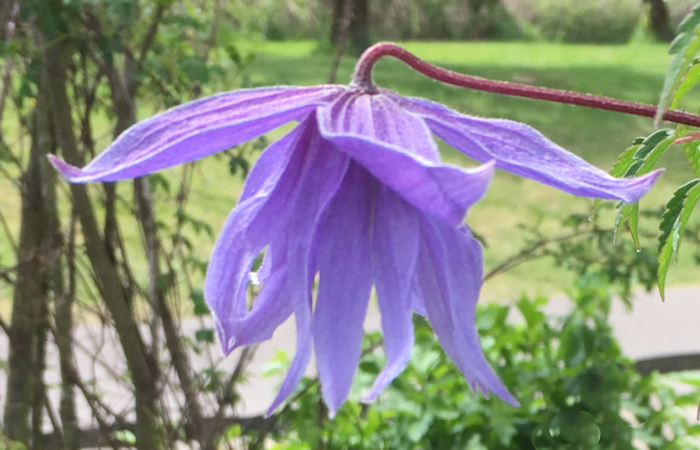
C. macropetala 'Mountaindale'

Seen up very close, the coloration on the sepal reverse is amazingly vibrant and varied.
 |
 |
|
|
 Just before and after dawn on 11 April, 2022 the garden received 5cm of heavy wet snow that took four hours to melt. This image was taken two days later. C. macropetala 'Mountaindale' simply responded: "Yes, please." |
 With a fresh dusting of dry organic rose and flower food, and a drench or two of liquid organic tomato fertilizer, we have no trouble getting C. macropetala 'Mountaindale' back into bloom. This image is from 30 July 2021. |

 Linda Beutler
Linda Beutler